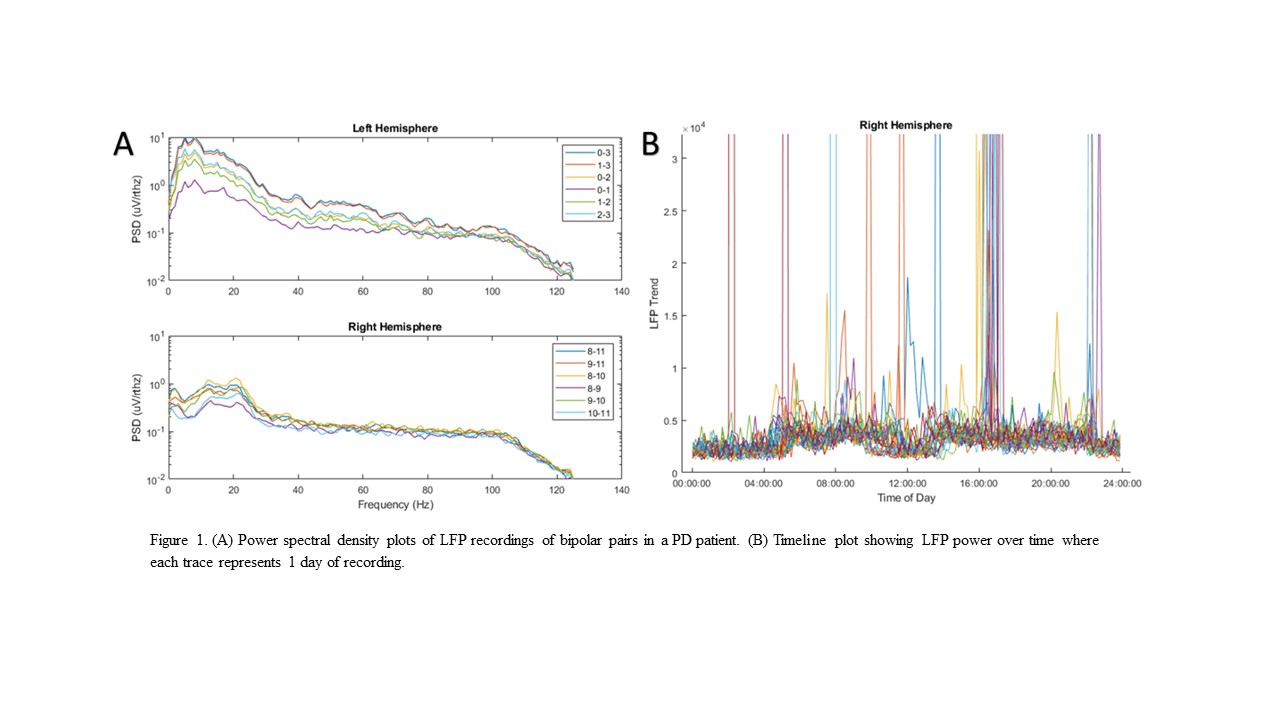Category: Parkinsonism, Others
Objective: The objective of this study is to report early findings from movement disorder and epilepsy patients that have been implanted with an INS device that is capable of chronic sensing.
Background: Current neurostimulation therapies do not consider the dynamical nature of movement disorder neural activity. Future therapies for neurological movement disorders such as Parkinson’s disease (PD) and epilepsy should be patient-specific and adapt to the patient’s need. Advanced technology for implantable neurostimulators (INS) now allows for simultaneous stimulation and sensing of local field potentials (LFP). These new devices are capable of giving new insights into movement disorders and are necessary for implementing adaptive therapies.
Method: Sensing data was obtained from 5 subjects (3 PD and 2 epilepsy patients) that were implanted with an INS capable of chronically sensing LFP activity. Built-in sensing features on the INS were used to evaluate the electrophysiological data. The analysis was conducted on data obtained from a product surveillance registry. For the patients with PD, a montage of all bipolar pairs across the lead was used to identify patient-specific peaks in the frequency domain. For the patients with epilepsy, chronic sensing was recorded over 28 days to observe any elevated LFP activity.
Results: Power spectral density plots obtained from the bipolar pairs demonstrated that the patients with PD had LFP peaks within the beta band (13-30 Hz). The chronic sensing data from one of the patients with epilepsy showed periodic elevated LFP activity (obtained from detecting LFP power in a 5 Hz window centered at 3 Hz), where a high concentration of the elevated activity tended to occur during a specific 2-hour window each day.
Conclusion: Sensing data provides valuable insights that can help improve therapy strategies for patients with movement disorders. Next-generation INS devices that incorporate sensing and stimulation are necessary to achieve patient-specific adaptive therapy.
Note: Some of the data within this abstract has been accepted as an e-poster by EAN, which takes place on June 19-22, 2021.
To cite this abstract in AMA style:
T. Theys, M. Case, A. van Hoylandt, A. Singer, K. Bhatia. Early Observations of Using a Chronically Implanted INS that can Sense Local Field Potentials in Movement Disorder Patients [abstract]. Mov Disord. 2021; 36 (suppl 1). https://www.mdsabstracts.org/abstract/early-observations-of-using-a-chronically-implanted-ins-that-can-sense-local-field-potentials-in-movement-disorder-patients/. Accessed December 31, 2025.« Back to MDS Virtual Congress 2021
MDS Abstracts - https://www.mdsabstracts.org/abstract/early-observations-of-using-a-chronically-implanted-ins-that-can-sense-local-field-potentials-in-movement-disorder-patients/

